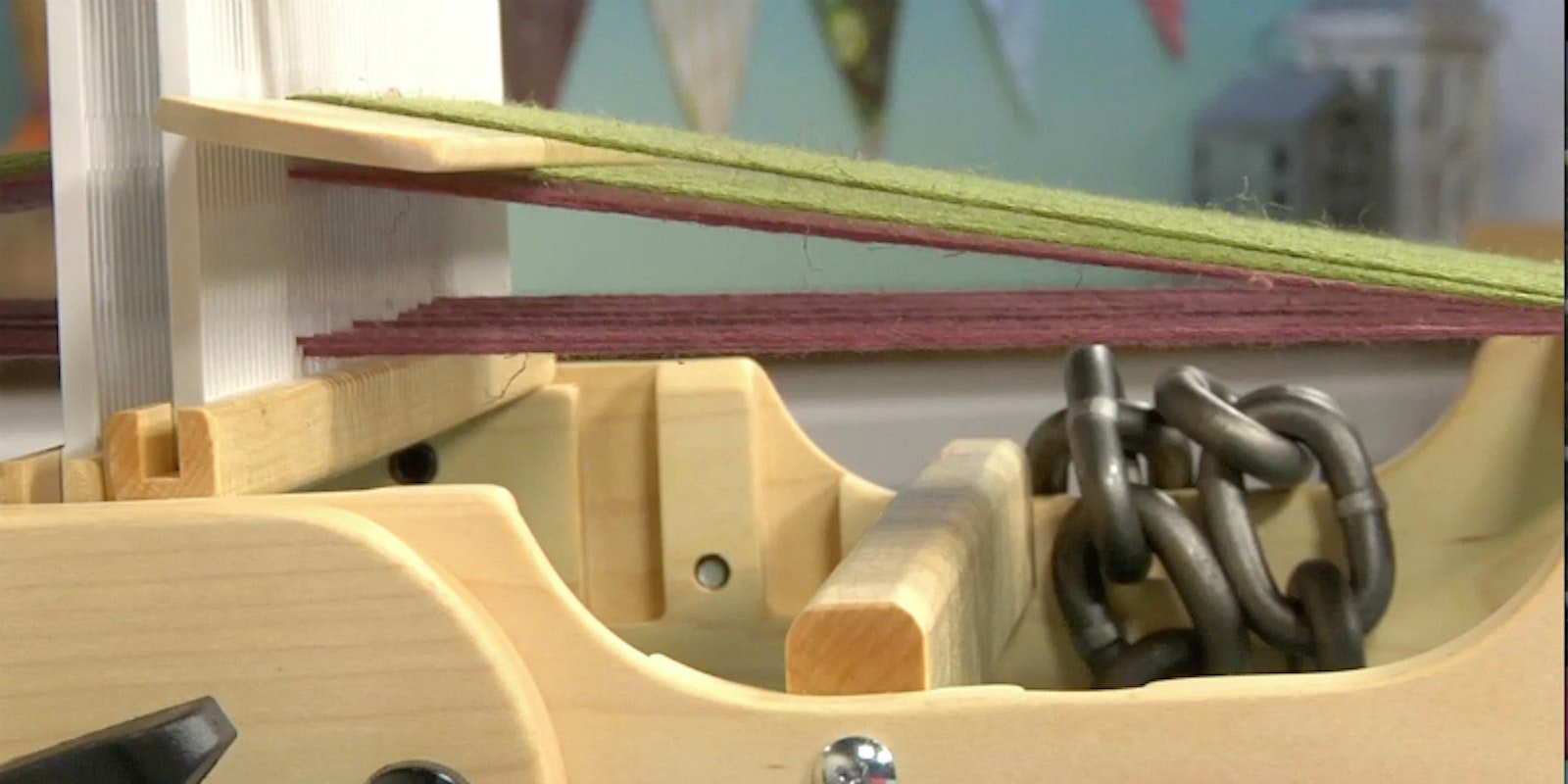Countless weavers of all skill levels have been inspired by Liz Gipson's practical, can-do approach to rigid-heddle weaving. I personally warped my very first rigid-heddle loom with the help of her excellent video Slots and Holes, which I highly recommend for anyone new to the rigid heddle. In her videos Twice as Nice and Double Your Fun, Liz dives into more next-level techniques using two heddles and pick-up sticks, which allow you to create truly incredible fabric. I'm practically salivating at the possibility of weaving doubleweave on a rigid heddle! Here's Liz herself to explain why adding that second heddle opens up a wide world of possibility. ~Andrea
I tell this story a lot: I once asked a farmer if you could milk a pig. Don’t ask me why; it made sense at the time. His answer: You can milk a mouse, but the real question is, why do you want to?
That stuck with me. We are insanely curious about all the possibilities available to us in weaving. For me, the answer isn’t what can I do, but why would I want to.
 A sampler of double heddle weaving by Liz Gipson. Photo credit: George boe
A sampler of double heddle weaving by Liz Gipson. Photo credit: George boe
Advantages of Rigid-Heddle Weaving with Two Heddles
Weaving with two heddles allows you four fundamental opportunities that aren’t available with one heddle:
- You can weave finer fabrics
- You can weave smaller floats
- You can weave a wider variety of patterns
- You can weave cloth that is twice the width of your loom
This makes more floor loom structures available to the rigid-heddle weaver, including two very important structures—doubleweave and a simple 1/3 twill. These weave structures require that you have more individual control over the threads then what a single heddle and pick-up stick can offer. Adding a second heddle allows you to more closely imitate a floor loom, without sacrificing the benefits of rigid heddle weaving, such as portability, affordability, and knitting-yarn-friendly nature.
Rigid Heddle Techniques
When it comes to tackling new skills, I like to go BIG. In both of my new videos, I demonstrate warping two heddles using two size 5 rigid heddles. In Twice as Nice I show you warping a solid warp, and in Double Your Fun we tackle warping with two colors. With chunky yarns, you can set up quickly for great patterning power at a scale that allows you to actually see what the threads are doing and get fast results while you build your skills.
In Twice as Nice, I encourage you to put on a short just-for-fun warp to get started, by walking you through weaving a "Two Heddle Table Topper" that I like to call the "Big Arse Swatch." Samples and swatches need not be packed away in a dark corner. You can proudly use them everyday as trivets, table runners, coasters, remote stations, under potted plants, any place that needs a little color—put a swatch on it! Use the pattern included in the video to practice all the different heddle positions and the patterns you can produce with one or more pick-up sticks or heddle rods.
Now you can unlock the possibilities of doubleweave for rigid heddle! If you have been dreaming of big cozy throws or baby blankets with no seams, check out Double Your Fun, where you will learn how to weave a fabric twice the width of your loom, create tubes for pillows and bags, and discover how to exchange layers for fun color play that creates a thick durable fabric perfect for placemats and runners. Included in the video is a pattern for a doubleweave blanket perfect for baby—no seams for little toes to get tangled in.
As with all my videos, I talk about how to head off mistakes before they happen and how to fix mistakes once they do! The goal isn't to avoid making mistakes, but to know what to do when they happen. You will get to know new tools, such as the temple, that keeps your fabric from drawing in—a common problem with some patterns like twill or when you mix patterns and plain weave. We will also tackle how to fix floats after the fabric comes off the loom.
These two foundational videos will expand your weaving skills and open up new possibilities for rigid-heddle weaving. It is such a privilege to be invited into your home or wherever your devices take you. Grab some of your favorite worsted weight yarn for a weave-a-long and gain all the confidence you need to expand your weaving repertoire.
Weave on! Liz
Liz Gipson is the author of Weaving Made Easy and is the founder of Yarnworker, a source for rigid-heddle weaving know-how.

